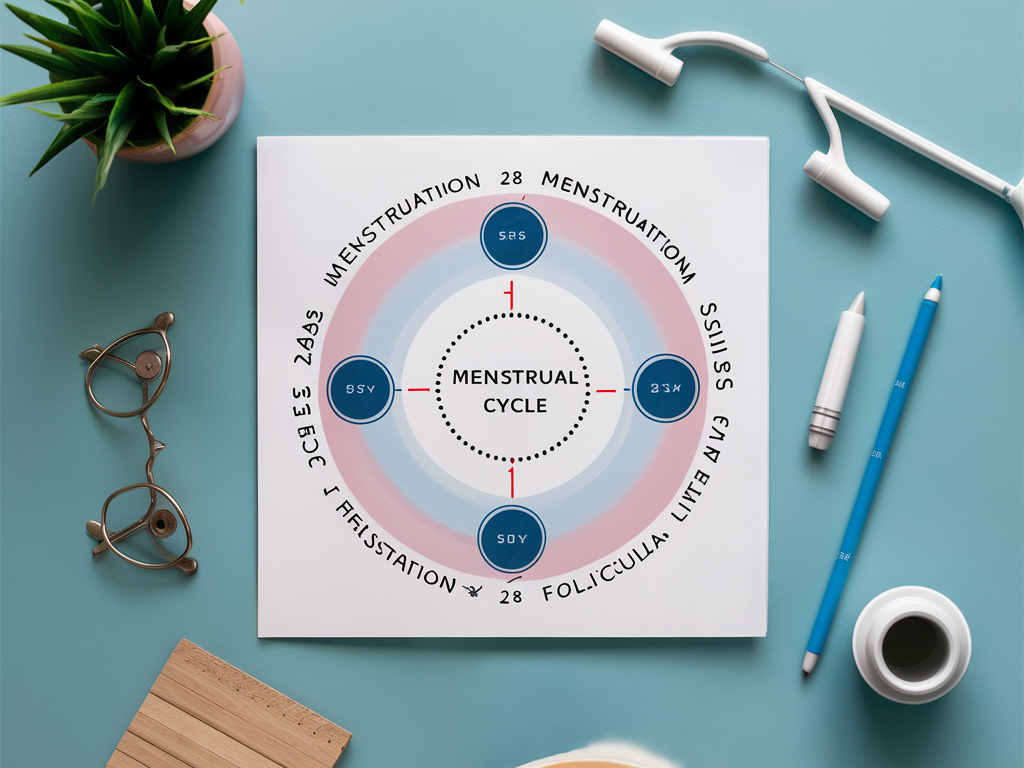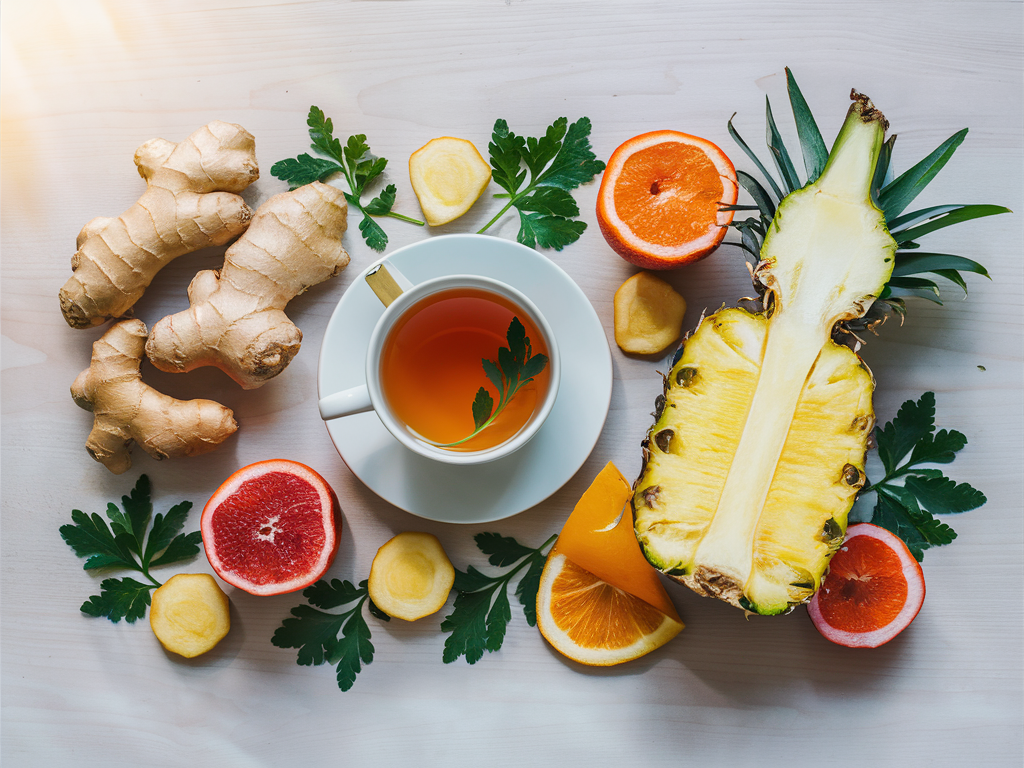Looking to trigger your menstrual cycle naturally but don’t know where to start? Many women occasionally need to induce their periods for various reasons—whether it’s to avoid menstruation during an important event, address irregularity concerns, or simply restore predictability to their cycle. This comprehensive guide explores evidence-based natural methods that may help stimulate menstruation while prioritizing your reproductive health and wellbeing.
There are many legitimate reasons why someone might want to induce their period naturally. Perhaps you’re planning a vacation and want to avoid menstruating during that time, or maybe your cycle has become irregular and you’re seeking to normalize it. Some women also experience uncomfortable symptoms when their period is delayed and look for safe ways to trigger menstruation.
Before attempting any method to induce your period, it’s essential to understand how your menstrual cycle works and what factors might be affecting it. This knowledge can help you make informed decisions about which approaches might be most effective for your specific situation.
Important Disclaimer: While the methods described in this article are generally considered safe for most women, they should not replace professional medical advice. Always consult with a healthcare provider before attempting to induce your period, especially if you have underlying health conditions or take medications that might interact with these remedies.

Understanding Your Menstrual Cycle
The typical menstrual cycle ranges from 21 to 35 days, with 28 days being the average. This cycle consists of several phases: menstruation, the follicular phase, ovulation, and the luteal phase. Each phase involves complex hormonal changes that ultimately determine when you’ll menstruate.
Several factors can delay your period, including:
- Stress and anxiety
- Significant weight changes
- Excessive exercise
- Hormonal imbalances
- Polycystic ovary syndrome (PCOS)
- Thyroid disorders
- Pregnancy
- Perimenopause
- Certain medications
You should be concerned about missed periods if:
- You’ve missed three or more consecutive periods
- Your cycle has suddenly become highly irregular
- You experience severe pain or unusual symptoms
- You might be pregnant
- You have PCOS or other known reproductive health issues
Method 1: Vitamin C
Vitamin C (ascorbic acid) may help induce menstruation by affecting estrogen and progesterone levels in your body. This vitamin potentially increases estrogen production while reducing progesterone levels, which could trigger the shedding of the uterine lining.
How to Use Vitamin C
Recommended dosage: 500-1,000 mg daily for no more than 3 days. Exceeding this amount may cause digestive discomfort.
Natural sources: Citrus fruits (oranges, lemons, grapefruits), kiwi, strawberries, bell peppers, broccoli, and tomatoes.
Potential side effects: High doses can cause stomach upset, diarrhea, and kidney stones. Those with certain medical conditions should avoid high supplemental doses.
Scientific evidence: While some anecdotal evidence suggests effectiveness, clinical studies specifically examining vitamin C for period induction are limited. Most evidence is traditional rather than scientific.
Method 2: Ginger
Ginger contains compounds that may help stimulate menstruation through its anti-inflammatory properties and potential effects on prostaglandin levels. It may also help alleviate menstrual cramps once your period begins.
Ways to Consume Ginger
- Ginger tea: Steep 1-2 teaspoons of freshly grated ginger in hot water for 5-10 minutes. Drink 2-3 cups daily.
- Supplements: Follow package instructions, typically 500-1,000 mg daily.
- Fresh ginger: Add to meals or smoothies (1-2 teaspoons daily).
Research findings: Studies have shown ginger’s effectiveness in reducing menstrual pain, but research specifically on period induction is more limited. Its anti-inflammatory properties may help regulate hormonal balance, potentially triggering menstruation.
Method 3: Pineapple
Pineapple contains the enzyme bromelain, which may help soften and break down the uterine lining. Additionally, bromelain has anti-inflammatory properties that could potentially influence prostaglandin levels, which play a role in uterine contractions.
How much is beneficial: Consuming 1-2 cups of fresh pineapple daily for several days might help induce your period. Canned pineapple contains less bromelain due to processing, so fresh fruit is recommended.
Best timing: Start consuming pineapple a few days before your expected period date for optimal results. Continue for 3-5 days if necessary.
Method 4: Parsley
Parsley has been used traditionally as an emmenagogue—an herb that stimulates or increases menstrual flow. It contains apiol and myristicin, compounds that may stimulate uterine contractions.
Parsley Tea Preparation
- Chop a handful of fresh parsley (approximately ¼ cup)
- Add to 1 cup of boiling water
- Steep for 5-10 minutes
- Strain and drink up to 2 cups daily for no more than 5 days
Precautions: Consuming excessive amounts of parsley tea can be harmful. Do not use this method if pregnant or if you have kidney disorders. Discontinue use if you experience any adverse effects such as dizziness or unusual bleeding.
Method 5: Exercise
Physical activity can influence hormone levels and potentially trigger menstruation by reducing stress hormones and improving blood circulation to the pelvic region. Exercise also helps maintain a healthy weight, which is crucial for menstrual regularity.
Recommended types of exercise:
- Aerobic exercises like brisk walking, jogging, swimming, or cycling
- Specific yoga poses that target the pelvic area (butterfly pose, cobra pose, bridge pose)
- Light to moderate cardio activities for 30-45 minutes daily
Finding balance: While exercise can help induce your period, excessive physical activity can actually delay menstruation. Aim for moderate exercise and avoid intense training regimens if you’re trying to bring on your period.

Method 6: Relaxation Techniques
Stress is a common cause of delayed periods. Cortisol and other stress hormones can interfere with the hypothalamic-pituitary-ovarian axis, disrupting the normal hormonal signals that regulate your menstrual cycle.
Effective Relaxation Methods
- Meditation: Practice for 10-20 minutes daily, focusing on deep breathing and mindfulness
- Progressive muscle relaxation: Systematically tensing and relaxing muscle groups
- Deep breathing exercises: Try the 4-7-8 technique (inhale for 4 counts, hold for 7, exhale for 8)
- Guided visualization: Imagine peaceful scenes or positive outcomes
Creating a relaxation routine: Set aside time each day—preferably at the same time—to practice your chosen relaxation techniques. Consistency is key to reducing stress hormones and potentially regulating your cycle.
Method 7: Sexual Activity
Sexual activity, particularly when it leads to orgasm, may help induce your period through several mechanisms:
- Orgasms cause uterine contractions that might help shed the uterine lining
- Seminal fluid contains prostaglandins, hormone-like substances that can stimulate uterine contractions
- Sexual activity can reduce stress, which may help regulate hormones
Research evidence: While research specifically on sexual activity for period induction is limited, studies have shown that prostaglandins in semen can soften the cervix and potentially trigger uterine contractions. This effect is most notable when your period is already due or slightly delayed.
Method 8: Warm Baths and Heat Therapy
Heat therapy increases blood flow to the pelvic region, potentially helping to trigger menstruation. The relaxation benefits can also reduce stress, which may contribute to menstrual regulation.
Recommended approach:
- Take warm (not hot) baths for 20-30 minutes
- Maintain water temperature between 90-100°F (32-38°C)
- Apply a heating pad to your lower abdomen for 15-20 minutes several times daily
Enhancing the experience: Consider adding Epsom salts (1-2 cups) to your bath for additional relaxation benefits. Lavender or chamomile essential oils (5-10 drops) can also promote relaxation, but avoid if you have sensitive skin.
Method 9: Turmeric
Turmeric contains curcumin, which has anti-inflammatory properties that may help balance hormones and potentially stimulate menstrual flow. It may also increase heat in the body, which could promote uterine blood flow.
Ways to Consume Turmeric
- Golden milk: Mix ½ teaspoon turmeric powder with warm milk and a pinch of black pepper (enhances absorption)
- Turmeric tea: Simmer ½ teaspoon turmeric powder in water for 5 minutes
- Supplements: Follow package directions, typically 500-1,500 mg daily
Precautions: Turmeric may interact with blood thinners and certain medications. It’s not recommended for people with gallbladder problems or those about to undergo surgery. Excessive consumption may cause digestive discomfort.
Method 10: Papaya
Unripe or green papaya contains enzymes like papain that may stimulate uterine contractions. It also contains carotene, which may influence estrogen and progesterone levels.
Best consumption methods:
- Eat fresh, ripe papaya (1 cup daily)
- Prepare green papaya salad (traditional in Southeast Asian cuisine)
- Blend papaya into smoothies with other cycle-supporting ingredients like pineapple
Cultural and historical uses: In many traditional medicine systems, including Ayurveda and traditional Chinese medicine, papaya has been used for centuries to promote menstruation. In some cultures, papaya was even used (controversially) as a natural contraceptive.
Important Considerations Before Trying These Methods
Before attempting to induce your period naturally, consider these important factors:
Medical Contraindications
Do not attempt to induce your period if you:
- Are or might be pregnant
- Have bleeding disorders or take blood thinners
- Have endometriosis, uterine fibroids, or other reproductive health conditions
- Have heart disease, liver disease, or kidney problems
- Are undergoing hormone therapy
Pregnancy Testing
Always take a pregnancy test before attempting to induce your period, especially if you’re sexually active. Many of these methods could be harmful during pregnancy, potentially leading to complications.
When to Seek Medical Help
Consult a healthcare provider if:
- Your period is more than 90 days late (and you’re not pregnant)
- You experience severe pain, heavy bleeding, or unusual symptoms
- You have a history of irregular periods or PCOS
- You’ve recently started or stopped hormonal contraceptives
- You experience adverse reactions to any natural remedies
Potential Risks
While these methods are generally considered safe, potential risks include:
- Gastrointestinal discomfort or allergic reactions to certain foods and herbs
- Interference with medications or existing health conditions
- False sense of security if a missed period is due to an underlying health issue
- Harmful effects if used during undiagnosed pregnancy

When Natural Methods Aren’t Working
Timeframe expectations: Most natural methods, if effective, will trigger menstruation within 24-72 hours. If your period hasn’t started after trying these methods for one week, they’re unlikely to work on their own.
Medical Alternatives
If natural methods aren’t effective, medical options include:
- Hormonal medications prescribed by a doctor
- Progesterone therapy to induce withdrawal bleeding
- Oral contraceptives to regulate your cycle
Underlying Conditions to Consider
Persistent menstrual irregularities may indicate underlying conditions such as:
- Polycystic ovary syndrome (PCOS)
- Thyroid disorders
- Hyperprolactinemia
- Primary ovarian insufficiency
- Structural abnormalities of the reproductive organs
- Excessive weight loss or gain
- Chronic stress or anxiety
Conclusion
These natural methods for inducing your period vary in their scientific backing, but many women report success with one or a combination of these approaches. Remember that each body is unique, and what works for one person may not work for another.
Tracking your menstrual cycle using a calendar, app, or journal can help you better understand your patterns and identify potential causes of irregularity. Note symptoms, lifestyle factors, and the effectiveness of any methods you try.
While these natural approaches are generally safe, they should not replace professional medical advice. If you consistently experience irregular periods or have concerns about your menstrual health, consult with a healthcare provider for proper evaluation and personalized recommendations.

